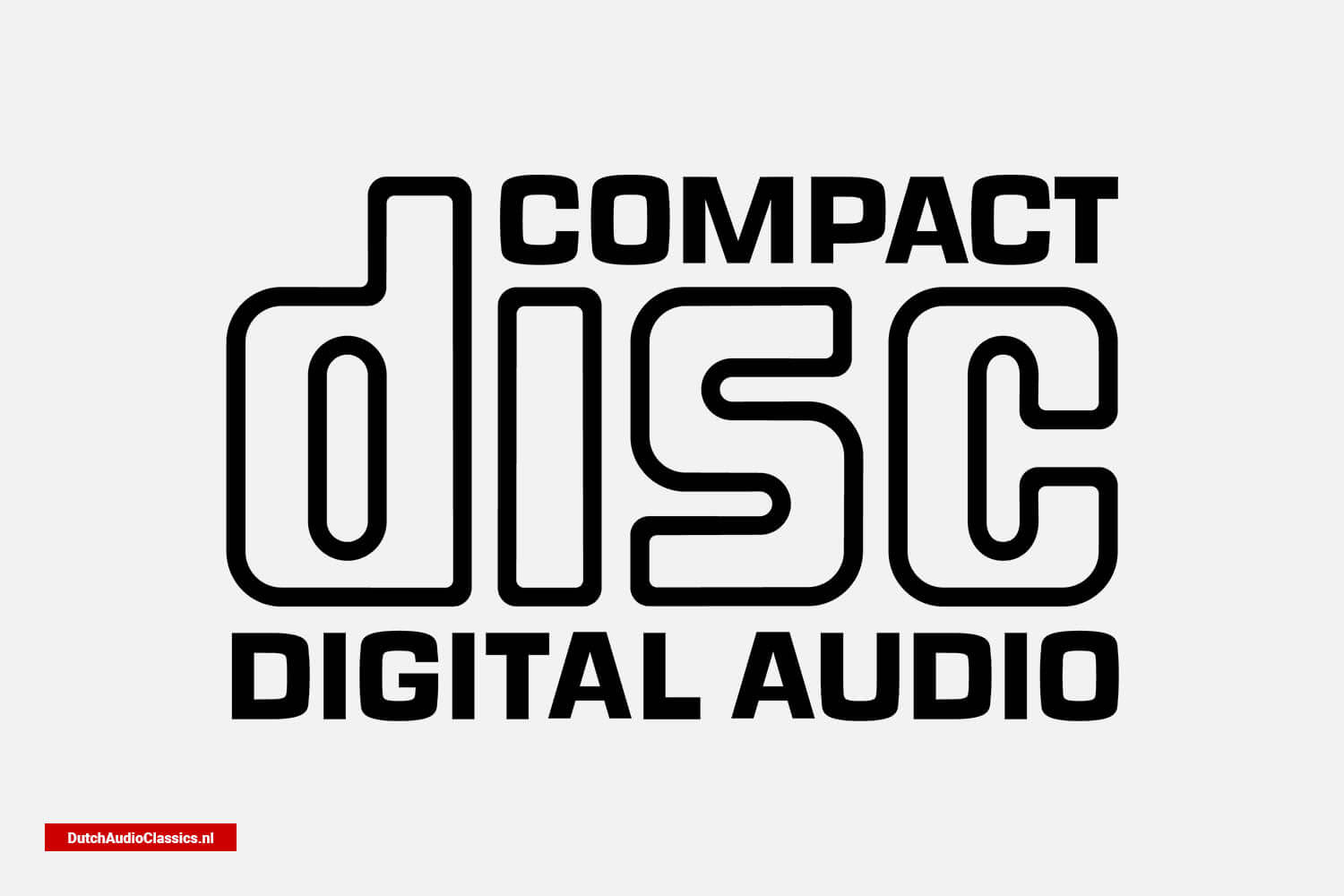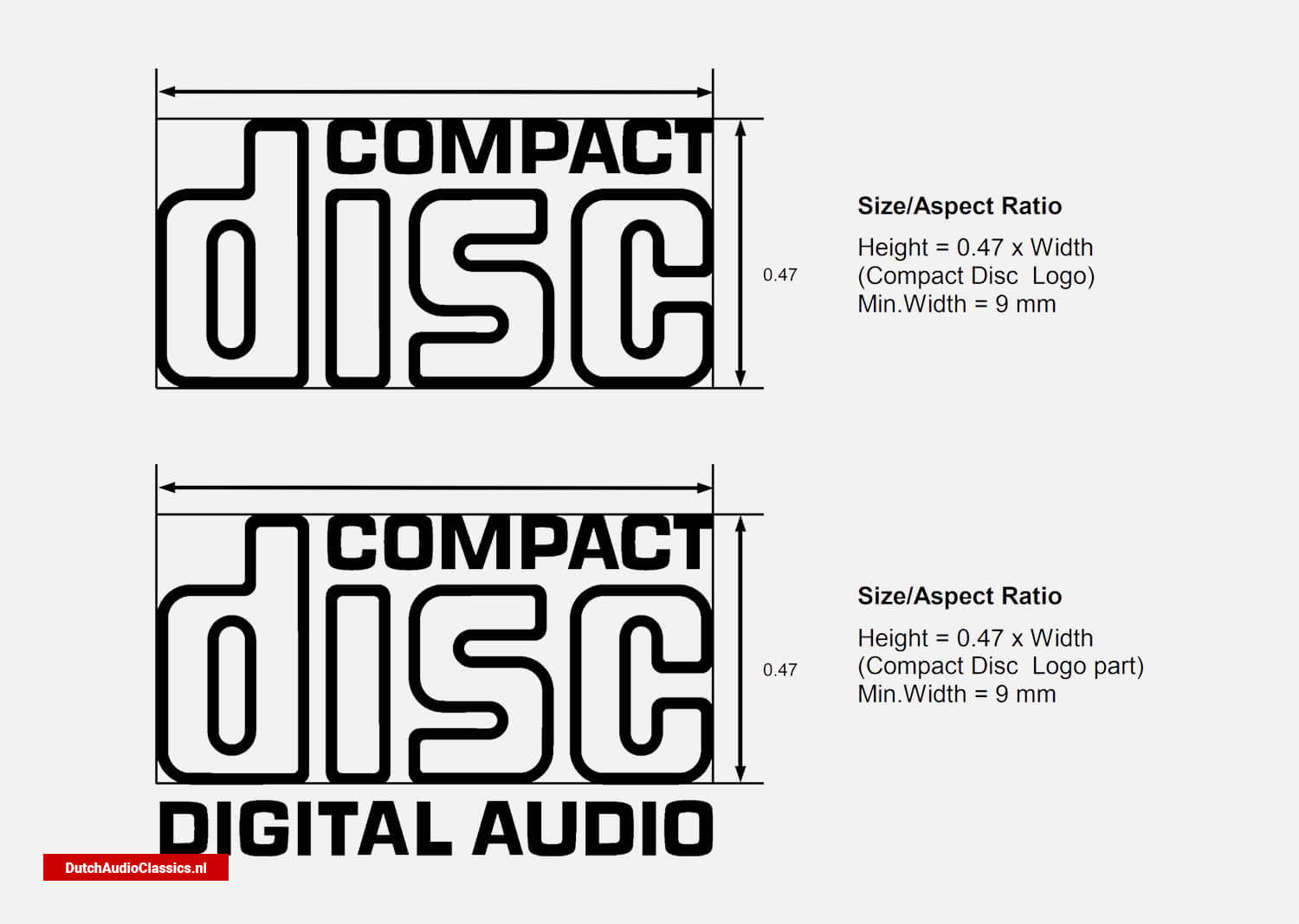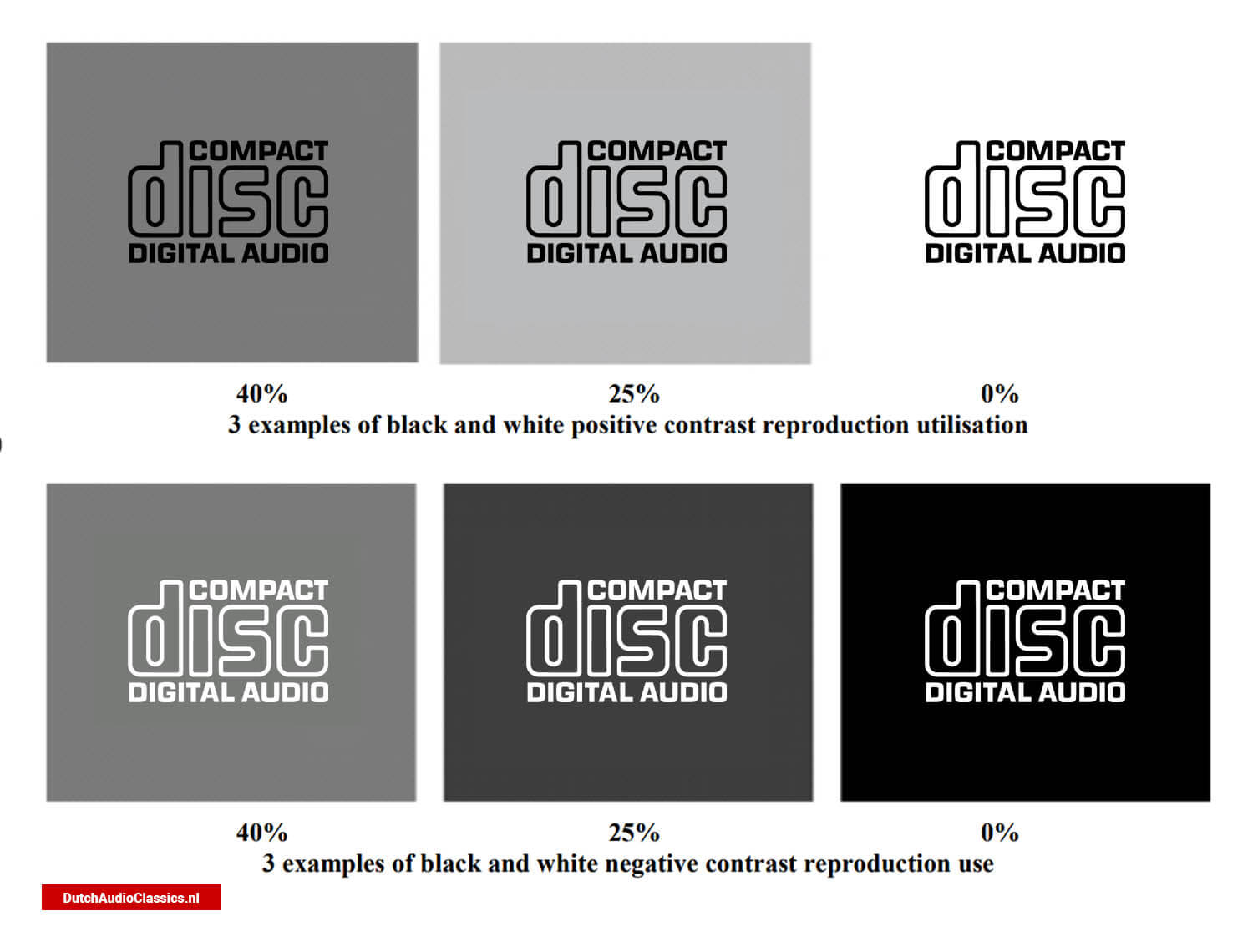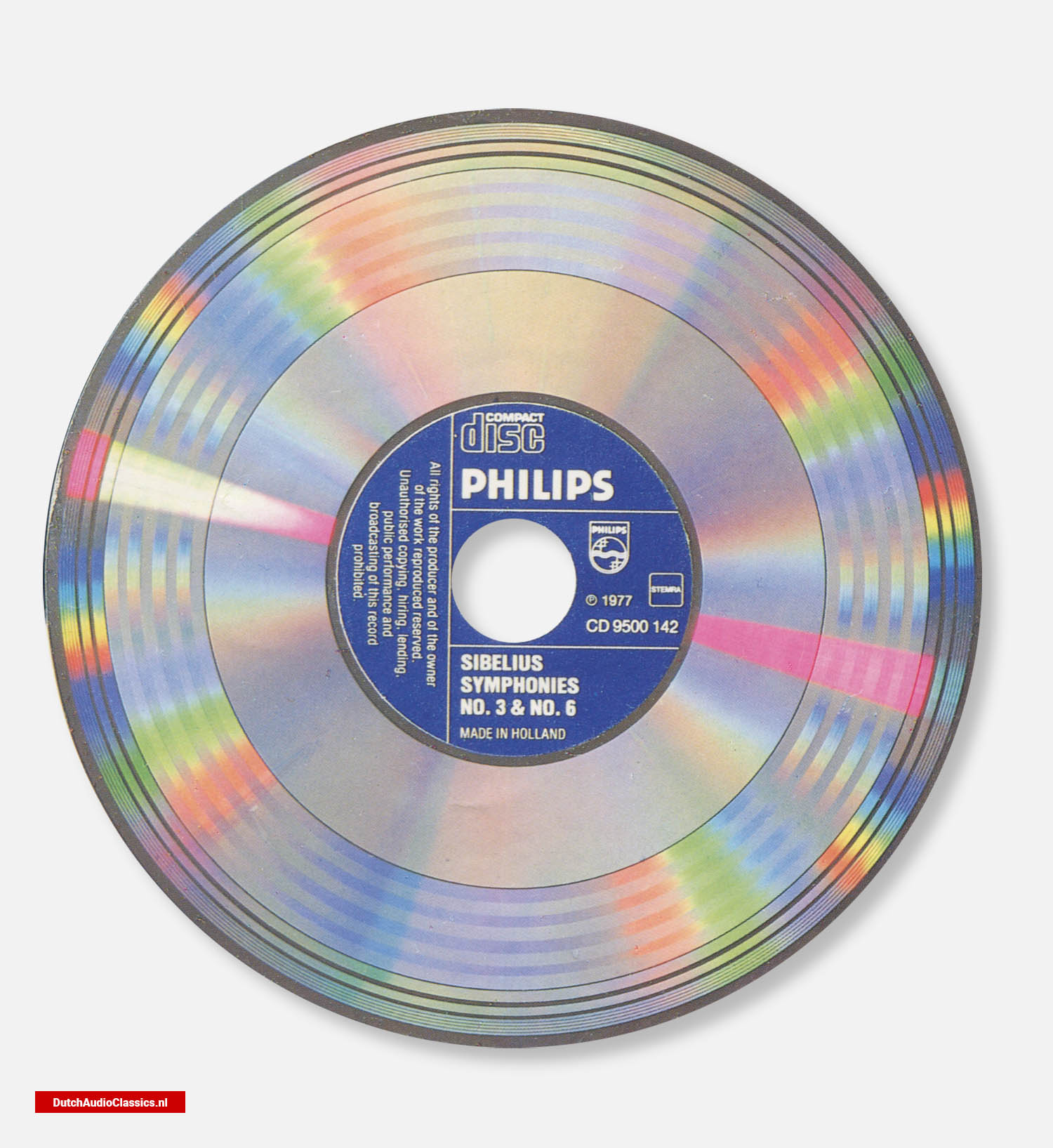The Compact Disc logo was developed by Philips at the end of the '70s. The development of the Compact Disc format was a joint venture between Philips and Sony, with the goal of creating a new digital audio format that would offer superior sound quality and convenience over existing formats such as vinyl records and cassette tapes.
Compact Disc Digital Audio logo
 The Compact Disc Digital Audio logo
The Compact Disc Digital Audio logo
- The story about the Philips logo
- The wordmark Philips and the Philips Shield emblem - Concern Standardization Department - 1973-01-01 - UN-D 1111
- Philips Compact Disc press kit & introduction March 1983
- First impressons of the Compact Disc at the Japan Audio Fair - 1981
- Philips Compact Disc System folder - January 1979
The design of the Compact Disc logo was an important aspect of the development of the CD format, as it was intended to be a simple yet recognizable symbol that would help to promote the new format to consumers. The logo was designed to be a simple representation of a Compact Disc, with a red and white color scheme. The logo was designed to be easily recognizable and memorable, and it was intended to be a symbol of the new digital audio format and its high-quality sound.
The design of the Compact Disc logo was not attributed to a single person, it was developed by a team of designers and engineers at Philips, it was an important aspect of the development of the Compact Disc format, which was introduced to the public in 1982.
 The dimensions of the Compact Disc logo
The dimensions of the Compact Disc logo
The Compact Disc logo was widely adopted by the music industry and it became the standard logo for the Compact Disc format. It played an important role in the success of the Compact Disc format, as it helped to make the format more appealing to consumers and it helped to promote the new format to the public.
From the officiel Philips Compact Disc (CD) Logo Guide document
Introduction
This Compact Disc logo guide describes a set of rules for a correct utilisation of the COMPACT DISC logo, including all related logos, for the consumer electronics field as well as for professional and entertainment areas.
These instructions for Compact Disc logo use supersede all other instructions for Compact Disc logo use and they determine the way in which the Compact Disc logo is to be applied on the obiects indicated. The user is advised to proceed only if the user has identified the logo which the user wishes to use as defined in this logo guide, which specifies the physical implementation of the logo on the carrier in question.
Companies or persons licensed under any of the Philips Compact Disc License Agreements are entitled to apply the appropriate Compact Disc logo if they comply with these guidelines. No company or person will be entitled to apply any of the CD logo's to licensed products (disc or player) without first acquiring the appropriate Compact Disc License Agreement. Companies or persons wishing to apply CD logo's on material other than licensed products must contact Philips for approval. If a logo is used, it must be used correctly.
Object
The Compact Disc logo may only be applied on CD players, CD recorders, CD discs and related packaging, accessories, advertising, printed materials, etc. The Compact Disc logo may also be displayed on electrically generated images (e.g. banners or trailers of program material displayed on television and computer monitors) to indicate the compliance of the CD players, the CD recorders, the CD discs and the program material with the Compact Disc System Descriptions and to indicate the compatibility among the respective Compact Disc products within the specific standard as referred to in this document. If the Compact Disc logo is used, it must be used correctly as described in this document.
Territory
These instructions for use, specify the way in which the Compact Disc logo has to be used world wide. Such instructions can not be applied in countries where such trademarks are forbidden by law.
Use of the Compact Disc logo
Shape
The Compact Disc logo is a combination of the words "COMPACT DISC" and the Philips approved COMPACT DISC logo additions. (The approved "additions" are defined as lettering underneath of and/or beside the words "COMPACT DISC"). These additions (or lack of them) are explained in this document and the electronic files refferred to. The Compact Disc logo must always be used in the fixed combination and form as shown in the attached files. Variations and additions are strictly forbidden. Any user created additions, deletions and modifications to any part of the Compact Disc logo and its additions, if any, are also strictly forbidden. It is not allowed to use the examples shown in this document for scanning purposes. The electronic files referred to in this document are to be used.
Colour
The Compact Disc logo and its additions must only be used in black or white lettering. Different colours within the same logo may not be used. Different textures or surface irregularities within the same logo may not be utilised. Engraving or moulding the Compact Disc logo without complying to the black or white colour rule is not permitted.
 Colour use Compact Disc logo
Colour use Compact Disc logo
Negative and positive reproductions
If a positive or negative version of the Compact Disc logo is used, the background colour and intensity must be uniform across the entire logo. When the logo appears in black, depending upon the tonal value of the background, a (positive) contrast range of 0% - 40% is permitted. When the logo appears in white, depending upon the tonal value of the background, a (negative) contrast range of 40% - 100% is permitted. Shadows and/or graphic effects are not allowed. Please see the examples on the following page. (Note: in the examples shown, the printed quality may not reflect the actual contrast percentages/ ranges intended.
Clear zone
A complete Compact Disc logo including a Philips approved addition, if included with the appropriate logo, exactly as shown in the artwork supplied) must be utilised maintaining a clear zone. A clear zone is an area in which no other graphical or textual elements appear and is at least the height of the stylised letter "d" of the word "disc" (and only in the case of the Compact Disc Video logo, the stylised letter "D" of the word CD).
The Compact Disc logo must not be enclosed on its own in any kind of border, box or frame, nor may any text, slogan, etc. be added. The complete Compact Disc logo must therefore be utilised on its own and free-standing.
Aspect ratio
The Compact Disc logo may be reduced or enlarged on the condition that the same relative positions and proportions between the respective elements (aspect ratio) are maintained. In case electronic artwork is used, the aspect ratio has to be verified and where needed to be corrected. The aspect ratio value given hereunder is applicable to the Compact Disc logo. The aspect ratio may not deviate more than 5%. The relative positions and proportions of this Compact Disc logo and the Philips approved logo additions as indicated by the artwork have to be maintained.
Size
The Compact Disc logo may be reduced or enlarged on the condition that the same relative positions and proportions between the respective elements (aspect ratio) are maintained and that the Compact Disc logo is always legible and easily readable with the naked human eye. The minimum size of the width of the logo is 9mm. There is no maximum size.
Appearance
The appropriate Compact Disc logo (as described in the above sections) may only be applied in the following positions of:
- the control panel of CD players and/or CD recorders;
- the label area of a CD Disc;
The appropriate Compact Disc logo may also only be applied on the following:
- the CD Jewel box and/or the CD holder, the inlay card and or booklet and/or its covering material;
- the instruction manual of the CD player or CD recorder (in whatever form the manual is provided, it is recommended that the CD logo appear at least on the cover of the manual);
- packing boxes of CD players, CD recorders and CD discs;
- printed materials (including catalogues, posters, advertising materials, etc.).
Use of the wording COMPACT DISC and the acronym CD
To refer to the system or standard, the wording "COMPACT DISC" or the acronym CD (in capitals and in the same typeface as the rest of the text) may be used in written material on the condition that the Compact Disc logo is also used prominently, at least once in the said document.
The acronym CD may also be used in plain lettering as a type indication of the product, both on players and discs, provided that it is always followed by a number. Construed type faces for the letters CD so making out of this letter combination a new logo type device must not be used. The acronym may also be used conditionally when the Compact Disc logo is used.
The acronym CD may also be used as an abbreviation in plain lettering in conjunction with only the following abbreviations (in capitals and in the same typeface as the remaining text) as shown in this document.
- CD-DA for Compact Disc Digital Audio.
- CD-G for Compact Disc Graphics.
- CD-EG for Compact Disc Extended Graphics.
- CD-MIDI for Compact Disc MIDI.
- CD TEXT for Compact Disc TEXT.
- CD EXTRA for Enhanced Music Compact Disc.
- CD-ROM for Compact Disc Read Only Memory.
- CD-i for Compact Disc Interactive.
- CD-V for Compact Disc Video.
- Video CD or VCD for Video Compact Disc.
- Photo CD or PCD for Photo Compact Disc.
- CD-R for Compact Disc Recordable.
- CD-RW for Compact Disc ReWritable.
- High-Speed CD-RW for High-Speed Compact Disc ReWritable
- SVCD, Super VCD or Super Video CD for Super Video Compact Disc.
The acronyms may also be used conditionally when use is made of the Compact Disc logo
 A picture of a dummy compact disc from 1977 brochure
A picture of a dummy compact disc from 1977 brochure